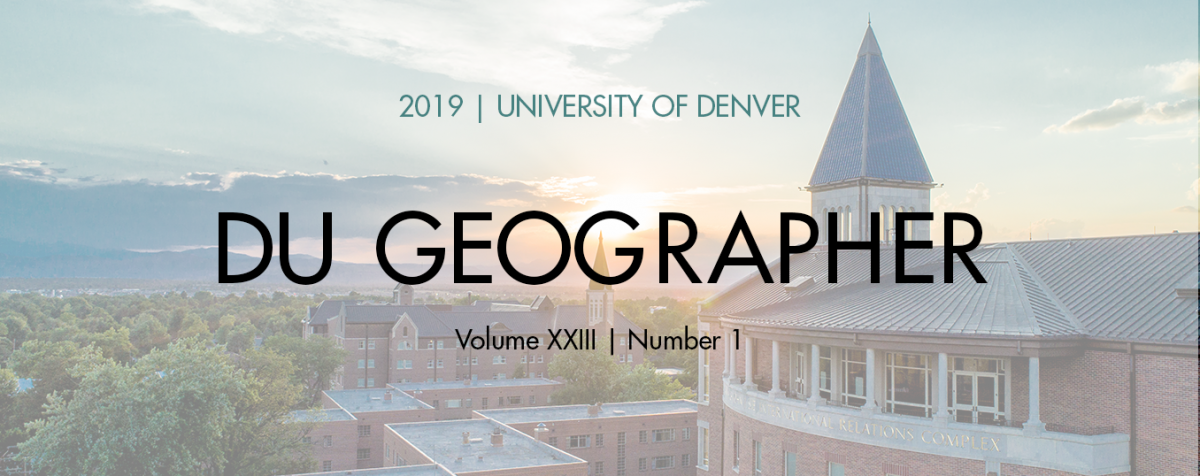Geography Faculty Updates
Eric Boschmann
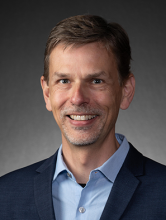
Six years ago this month I was returning from a sabbatical trip across Latin America, which included an extended stay in Asunción, the capital of Paraguay. The purpose of the stay was to conduct preliminary fieldwork for writing a lengthy profile of the city, as there is currently very little written in the English language about Asunción from an urban geographic perspective. As with many scholarly pursuits, final products can take years to emerge… whether it is delays in writing, paternity leave, a lengthy review process, or needing to find a different journal for publication. So, one key highlight for this year was the publication (finally!) of my article, “Historic Evolution and Neoliberal Urbanism in Asunción” in the Journal of Latin American Geography. A photo essay about Asunción with a different journal is still in progress.
But my main area of research is upon older adults and their patterns and behaviors with daily out-of-home activities and urban transportation. The results from one large survey I conducted was published this summer: “Daily Urban Trip Mobility and Perceptions of Mobility Among Older Adults in the Denver (USA) Region” appeared in June 2020 in the Journal of Aging and Social Change. Another aging and mobility project was halted in March 2020 due to the rising pandemic. But over the summer I was fortunately able to pivot the nature of the study and deploy a national-level survey to examine the impacts of pandemic restrictions upon older adults’ daily mobility practices. The survey results just came in and will soon be analyzed and prepared for publication. This new study was supported by DU’s Knoebel Institute for Healthy Aging.
Working graduate students is always a highlight! This year I enjoyed collaborating with two former students, Greg Chase (MA 2011) and Ryan Keeney (MSGIS 2017), in preparing their theses projects into book chapters for the AAG’s The Rocky Mountain West: A Compendium of Geographic Perspectives, edited by our own Dr. Mike Keables. And this past summer amid on-going pandemic isolation, one highlight for me was weekly Zoom meetings with my PhD students, Jessica Villena and Joe Chestnut.
Mike Daniels
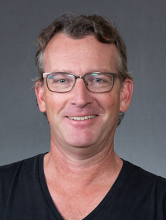
Mike spent 2019-2020 working on publications, ongoing grants, grant proposals, teaching, advising, and service. He was co-editor of the volume The Physical Geography and Geology of the Driftless Area (Geological Society of America Press, 2019). He was lead author of the chapter “Holocene paleohydrology and paleofloods” in the same volume. He was co-author of the article “Late Pleistocene landscapes and settlement dynamics of Portuguese Estremadura” (Journal of Field Archaeology, 2020). He managed one active grant (Soil erosion, floodplain sedimentation, and agricultural sustainability over centennial timescales, NSF 1740335), and submitted two additional grant proposals, one as co-PI with DU colleague Ming Zhang to USDA; another as advisor/PI with DU PhD student Shannon Jones to NSF (GSS-DDRI). He taught undergraduate and graduate courses in lecture, field, and online formats. He advised two DU students to completion of their M.A. theses: Brandon Bailey (Rock glacier development in the San Juan Mountains); and Chris Hancock (Spatial and temporal controls of streamflow variability in the San Juan Mountains). He was elected Chair of the Geomorphology Specialty Group of the AAG. And he continued serving on the editorial boards of Geomorphology and the AAG Review of Books.
Andy Goetz
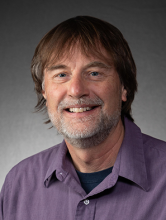
Andy was able to attend three conferences in person before coronavirus cancellations began. He presented papers at the International Urban Freight conference in Long Beach, California in October 2019 and the Transportation Research Board meeting in Washington, DC in January 2020, and also participated in a workshop on Regional Intergovernmental Organizations in Pittsburgh in February 2020. Andy and Eric Boschmann conducted an in-person presentation of their book Metropolitan Denver: Growth and Change in the Mile High City for the Northwestern University Club of Colorado in January 2020.
Andy had two journal articles published this year. His editorial article “Transport challenges in rapidly growing cities: is there a magic bullet?” was published in the journal Transport Reviews. Together with former student Danny Zimny-Schmitt, “An investigation of the performance of urban rail transit systems on the corridor level: A comparative analysis in the American west” was published in the Journal of Transport Geography.
Andy was interviewed by local and national media numerous times over the last year on topics including transit labor shortages, COVID impacts on public transit and the airline industry, coronavirus impacts on transportation funding, the future of the gas tax for transportation infrastructure funding, and the future of cities in the COVID era.
Hillary Hamann
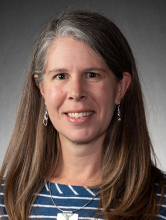
While the pandemic put a damper on many things, it did allow for a lot of writing productivity. I was a co-author of three articles that have generated a range of exciting collaborations. Colleague Helen Hazen and I will see our paper “Assessing student learning in field courses using oral exams” published in The Geography Teacher later this year (though unfortunately, our new winter inter-term field class to New Zealand had to be postponed). Recent graduate Taylor Johaneman was the first author of the Arctic, Antarctic and Alpine Research paper, “Classifying connectivity to guide aquatic habitat management in an arctic coastal plain watershed experiencing land use and climate change,” that was based on her senior thesis research. Finally, doctoral student Meghan McCarroll and I published our review and synthesis project on water literacy, “What we know about water: a water literacy review.” It was selected as a Feature Paper in the journal Water as part of a special issue on Water Literacy and Education. Water Literacy was also the theme of a well-attended workshop that I co-led as a part of the virtual Earth Educator Rendezvous in July and will be a part of a paper session we have organized at the AAG in 2021.
My teaching has been dominated by making the switch to effective online delivery and engagement. This has felt especially challenging for my field and hands-on classes, but I’ve been impressed by the resiliency of my students and their willingness to jump in to engage in new experiences ranging from break-out room discussions in Water Resources and Sustainability, to exploring and measuring local streams and rivers in Hydrology as we were spread out across the country. I’m looking forward to getting “back to normal,” but also expect that some of the new things we’ve tried in class will become more permanent parts of my teaching repertoire. Additionally, while teaching remotely, I’ve had the opportunity to spend a bit more time tending to my garden and managed a bumper crop of 500 lbs of produce, despite drought, wildfire smoke/ash and early snowstorms this summer.
Helen Hazen
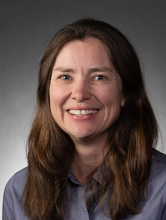
Helen continued her work on issues of health and environment, developing a proposal for a new textbook on population geography with a focus on sustainability and social justice. She has also been working on a variety of teaching projects, including two publications on the use of orals for assessment and editing a volume for The Geography Teacher that focuses on innovative teaching strategies. She has also developed a new interterm class on sustainability in New Zealand, which was due to run winter interterm 2020, and will hopefully resume once travel becomes a possibility again.
Steve Hick
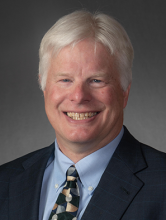
Always open with a joke. What do fish and maps have in common? This is an easy one – they both have scales! In the midst of a pandemic there is still time for a joke to open class, especially since so many of those classes have been offered via Zoom. You’ve read and you know that the pandemic has radically altered the teaching landscape, but in the Online MSGISc program, life goes on as per usual. Oh, the advantages of teaching online! Broadcasting a synchronous lecture online? We’ve been doing that for six years. Our online and HyFlex experience prepared us to weather the pedagogy of a pandemic quite well all things considered. I was invited to offer a webinar on HyFlex course delivery for the university community back in July to share our experiences and expertise.
I continue to direct GIS activities in the department, including lab maintenance and innovation, teaching classes, academic and career advising, enrollment management, etc. I continue to teach cartography, Intro GIS, GIS Project Management, Geographic Information Analysis, and then supervise the Capstone Projects. If we weren’t GIS Pros before, we are now having completed migration to ArcGIS Pro this year. I try to get a few UAS missions in when time and weather permit.
The Online MSGISc program keeps chugging along with approximately 40 students. The culminating experience of the MSGISc degree program is the completion of the capstone project. I am always amazed at the depth and diversity of our student’s capstone projects. My favorites capstone this fall:
Levene, Johanna. Feasibility of Using Alternative Fuels to Transport University of Denver Athletes – a Spatial Approach, 2020.
Visitation at the Field Station has been greatly reduced given the pandemic but in spite of that, we still have three ongoing active research projects: Ptarmigan nesting study by the USGS, deer mice biology at the University of Montana, and the effect of muon bombardment on microchips.
Mike Keables
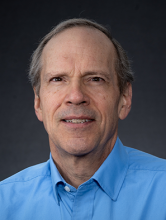
Mike continues to enjoy teaching his courses and working with faculty, staff and students in keeping the department strong. He remains active in his role as a mentor to department chairs, facilitating networking among chairs, communication with the senior administration, and problem solving for new and “seasoned” department chairs alike. He is currently serving on the Department Chair Advisory Board which reports directly to the provost. He served as the editor in chief of The Rocky Mountain West: A Compendium of Geographic Perspectives, an e-book that was to have been distributed to attendees of upcoming annual meeting of the American Association of Geographers to be held Denver. While the annual meeting was cancelled due to the pandemic, the e-book was published by the AAG and is available to download for free.
Mike Kerwin
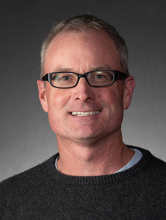
Twas the night before pandemic and all through the house 80, mask-less people were huddled together enjoying food, drink and musings of drought. Okay, bad pun, but on Tuesday March 10, 2020, I was presenting research on drought and climate change in South Africa to a lively group at the monthly Golden Beer Talks. The next day would see the end of group gatherings in the Denver area lead by the National Basketball Association who abruptly cancelled their season. Meanwhile, Friday March 13 would turn out to be the last day I would enter DU’s rickety but iconic Boettcher Center West for five months!
The exhilaration from an evening spent talking science with friends, family, DU graduate students, and total strangers would quickly turn to apprehension regarding how to plan, prepare and teach a field-based class on tree ring research, online, in only two weeks. Of course field work would have to be replaced by online labs, but I was frankly hoping to avoid zoombombers while students graciously put up with imperfect education. Today, as I write from my home office, also known as a battered camping table in my bedroom, reflecting back on those surreal early days of the COVID-19 pandemic reminds me why I love teaching and what I have missed since March 2020. It is the students, the questions, the facial expressions not visible under a mask, and the random hallway chats. Since 2003, I have taught approximately 85 classes including 21 short term field classes in the SW USA, South Africa, and Thailand. Highly experiential field classes are both the hardest to teach and the most rewarding - and, of course, impossible during a pandemic. But I also miss the huge lecture classes where some of the students don’t think they want to be there, but end up sharing some positive aspect of the class in a future email. Normalcy will return, but how much of these new virtual tools will future teachers utilize? In reality, it has been unexpectedly fulfilling to try to provide compelling curriculum online, but I won’t miss Zoom at least for a few months.
Before the pandemic, the small milestones of a “normal” 2019-2020 academic year were ticking away. Retirement celebrations were attended, most notably my favorite geology professor Eric Leonard at Colorado College. Research in South Africa was expanding. Current PhD student Meghan McCarroll secured funding from the Geological Society of America to support her June (2020) field work in Cape Town. A paper on the Day Zero Drought that I co-authored with former DU PhD student Thomas LaVanchy (and faculty member at Oklahoma State University) was recognized by Hydrology Journal as one of the top three publications of the year and featured on the Spring Nature homepage. M.S. student Jenn Murdock secured a Colorado Scientific Society grant to support her research using GIS and remote sensing to examine geological outcrops in the central Rocky Mountains. Classes, large (96 students) and small (12 students) were full of laughter and learning. Plans were in place (and DU students enrolled) for iteration number eight of the Geographies of South Africa, planned to start in Cape Town in June of 2020. Lastly, and with irony, in my Winter (2020) Contemporary Environmental Issues class, we actually examined the novel coronavirus in Wuhan (China) for an entire class period on January 22, part of our planned exploration of disease caused by environmental change. At the time, we brushed off this far away virus as interesting but mostly irrelevant. At least we got the story half right.
Kris Kuzera
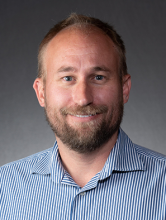
had another busy year teaching. In 2020, he taught seven classes on-campus (and virtually) and three for the online Masters program. These courses included the Our Dynamic Earth physical geography sequence for non-majors, Environmental Systems Hydrology and Landforms, Intro to GIS, Advanced Geographic Statistics, and Geographic Information Analysis.
Kris continues to direct the Internship Program and serves as one of the department representatives on the Faculty Senate. He recently published a peer-reviewed article on the state of craft beer in Colorado entitled “The Colorado Craft Brewer Experience” for the 2020 AAG meeting in Denver. Unfortunately, due to COVID, the conference was cancelled, along with three planned field trips exploring unique breweries around the city. This fall, Kris highlighted recent pedagogical changes in a talk on teaching GIS during COVID at the regional GIS in the Rockies conference.
Jing Li
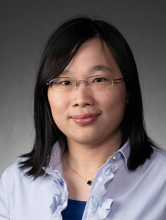
This is an unusual year to everyone. The COVID-19 pandemic has brought many unprecedent challenges. Like many scientists and researchers who have worked diligently to develop innovative solutions to mitigate the spread, I have been participated in several pilot projects on the COVID-19 pandemic. Since April, I have collaborated with local public health officials, transportation specialists, and epidemiologists to build Artificial Intelligence (AI) models to examine the spread dynamics within and between communities. I have also developed risk assessment and mapping tools to inform individuals about potential exposure risks at a personal level. While working on the projects, I feel the joy of serving the public good.
In addition to conducting regular research activities, I have attended multiple workshops to learn innovative teaching strategies and techniques that help our students thrive during the pandemic. Besides, I have worked with my colleagues to prompt the newly created BS in GISc program. We see more and more students join our GISc programs. This is exciting!
Hanson Nyantakyi-Frimpong
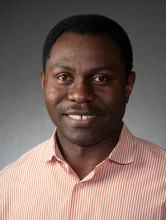
The year 2020 has been very challenging. The ever-evolving COVID-19 pandemic has made it impossible to do one of the things I like about geography: fieldwork. My long-term research projects have faced an unprecedented break in data gathering. Because most of my projects are based on smallholder agriculture, which is seasonal, the loss of summer field season means these projects will be delayed for an entire year. I do hope that once the pandemic is over, I can get to the field again in Ghana and Malawi. In both countries, my local collaborators have already been spreading COVID-19 prevention messages to the most distant, isolated farming villages.
In terms of teaching, the COVID-19 lock-down forced me to experiment with alternative ways of teaching the Sustainability Capstone. During the spring quarter, I worked with students in using Volunteered Geographic Information, including data mining from YouTube and Twitter, to explore the food security implications of COVID-19. The results were fascinating, and I look forward to employing these methods in future classes. In a second course called Geographies of International Development in Africa, I also adjusted my teaching material to directly address the COVID-19 pandemic. I expanded the coverage of health geography to move beyond the doom and gloom stories commonly found in textbooks, to a focus on some of the “surprising” COVID-19 responses in Africa, including food security successes in Nigeria, and the development of new technologies to meet the needs of patients in Cameroon.
Paul Sutton
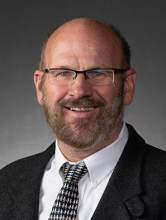
What a year 2020 has been. Let’s hope 2021 is a bit healthier, wealthier, and wiser. I got a taste of the COVID experience at DU during spring quarter 2020 teaching two classes (Ecological Economics and Remote Sensing) while serving as an advisor to several graduate students including Xuantong ‘Tony’ Wang (Phd Completed June 2020), Josh Baldwin (PhD completed June 2020), and Sophie-Min Thomson (MS GIS completed June 2020). I am currently in Australia and will visit with Sophie in a couple of days. I still collaborate with alumni on a variety of projects. Tilottama Ghosh and I worked on a paper exploring Building Volume per Capita as a potential indicator for the UN’s Sustainable Development Goals (SDG) (Ghosh et al 2020). Tony Wang’s dissertation work (Wang et al. 2019) on making sub-national maps of economic activity using night-time satellite imagery and agricultural data has also been identified as a potential way of informing some other SDGs using earth observation. I have been engaged in more research related to the promise and pitfalls of the UN effort regarding the Sustainable Development Goals (Sutton 2020). I have ongoing work with the United Nations through the GEO6 and the GEO-Cities programmes. I continue to support the Wellbeing Economy Alliance (WEALL) and I encourage everyone to check out their web page and support systemic change to our failed economic system. One facet of this failure is our irrational values and our inability to value the natural world which fundamentally supports our individual lives, our civilization, and our market economy. A ‘factoid’ I use to explain one of the ways our economic system is broken is this: The people of the United States spend over $8billion dollars a year for Halloween costumes and decorations. This is for ONE day of the year and most of that material is in a landfill within a month. The entire ANNUAL budget for our National Park System is only $3 Billion dollars a year. I was fortunate to have a sabbatical for the academic year 2020-21 during which I travelled to Australia and started a one-year stint in the Crawford School of Public Policy at the Australian National University in Canberra. It is very nice to be in Australia during the corona virus pandemic. It is a stark contrast to the tragedy taking place in the United States. The juxtaposition of the Australian and US response to, and experience of, the pandemic is an interesting way that Geography provides a mechanism to compare the effectiveness of different governments. I am spending my sabbatical in a school of Public Policy. I hope it is increasingly clear to people that governance matters. I am increasingly of the belief that many of our social, economic, and environmental problems are rooted in a failure of governance that is a symptom of the growing levels of economic inequity and inequality. I encourage people to read the book: Winners Take All: The elite charade of changing the world by Anand Giridharadas. Giridharadas explores the $400 Billion a year philanthropy industry which is dominated by a very few incredibly wealthy people. This book raises compelling questions about what we value and how we allocate resources and how and why our governments are failing to serve the public good. I am working with a team of international collaborators to make a small contribution to our understanding of the failed nature of our value system. We are engaged in a complex study of tropical systems (Hurricanes, Cyclones, Typhoons, and tropical storms) from 1900 to 2020 to assess the value of ecosystem services provided by coastal wetlands. It turns out that coastal wetlands protect us from over $300 billion dollars a year in economic damages and save over 5,000 lives a year. I ginned up a story map summarizing this work here: Don’t Drain the Swamp - Wetlands Save Lives and money too. I have accomplished this work via ZOOM while in Australia.
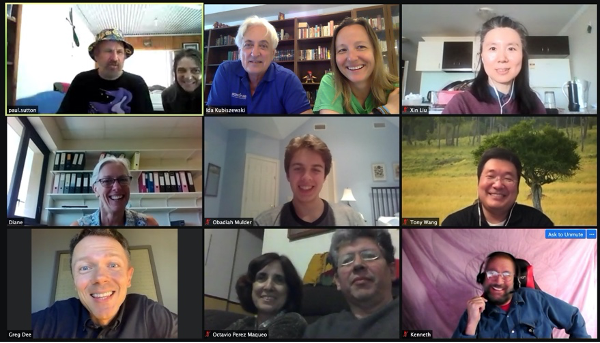
Collaborators on the ‘Don’t Drain the Swamp’ valuation of Coastal Wetlands Work
Top Left to Bottom Right: Paul Sutton (University of Denver), Sharolyn Anderson (Australian National University - ANU), Robert Costanza (ANU), Ida Kubiszewski (ANU), Xin Li (Chinese Academy of Sciences), Diane Jarvis (James Cook University), Obadiah Mulder (University of Southern California), Xuantong Wang (University of Illinois Urbana Champaign), Greg Drzazgowski (Channel 9 Tampa Bay), M.L. Martinez (Instituto de Ecología A.C.), Octavio Perez-Maqueo (Instituto de Ecología A.C.), Kenneth Mulder (Long Trail School, VT)
I have to thank Bill Boesch for his tireless efforts to establish an ArcGIS Enterprise system with a DU portal that allows DU faculty and students to build web mapping applications using image services. Getting this set up was a two-year process that took a great deal of effort. I encourage you to check out the aforementioned story map as a demonstration of DU Geography’s increasing capacity in this area. I am spending much of my sabbatical time improving my skills navigating the new world of web maps, web apps, AGOL, Living Atlas, portals, hosted feature layers, image services, tiled image services, dashboards, and story maps. I admit I have yelled at my computer on several occasions in frustration. I wish everything was as easy to use as ZOOM. I wish you all a wonderful 2021 and hope cross paths with you sooner rather than later and preferably face to face. Don’t hesitate to contact me with good news or questions.
Matthew Taylor
I spent the spring and summer in Nicaragua. Flight cancellations forced me to hunker down on the Pacific Coast for 5 months. Here I taught online, conducted long-term, in-depth research into human-environment relationships, and spent as much time in, on, and around the ocean as possible. During this time former doctoral students Thomas LaVanchy, Anna Sveinsdottir, and Nikolai Alvarado, and I put the final touches on our book about how tourism has impacted lives and environments in Nicaragua. The book was published by Springer Press this fall (Tourism in Post-revolutionary Nicaragua: Struggles over Land, Water, and Fish). We are very proud of this work. Our only work still to do on that front is to find funds to translate the book into Spanish. As well as publishing this book, I published several papers based on field work in Guatemala and Nicaragua, and submitted several proposals to the National Science Foundation seeking funds to conduct more research in Central America. To give you an idea of the type of research we are proposing there, I list the two titles of the proposals below: 1. Rainfall variability, extreme events, and vulnerability in heterogeneous social and environmental systems, and 2. Indigenous forest management in a non-stationary climate. Please keep your fingers crossed for funding so that students and I can be in the field again soon.
Even though a good slug of the doctoral students I mentored are now in their own academic positions at top universities around the country, I continue to work closely with them and to mentor them. It just shows you that relationships do not end just because you graduate! Soon they will begin mentoring and graduating graduate students of their own. I am very excited to begin working with several doctoral and masters students who began their degree programs a few months ago. A luta continua!
When this is all over please join us in the field. Seriously. There is nothing better than being in the field with current and past students.
Erika Trigoso Rubio
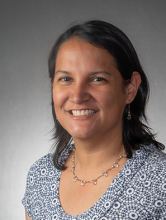
Erika enjoyed a mini-sabbatical this past year, that allowed her to do some preparatory fieldwork for her interterm class in the Peruvian rainforest. In addition, she was able to write and submit an article for publication about her experience teaching field classes. Erika continues to teach one quarter of her Honors Scientific Inquiry--Natural course Global Environmental Change while several other had to be delivered online. She also had the opportunity to travel in February to Sweden to lead our Global Master’s Program in geography at Lund University. She was invited to join the Lund’s geography department field class for greenhouse analysis (methane) in the Swedish Arctic. She was given two grants from the Office of Internationalization to accomplish this initiative, so she also traveled this past September to Abisko naturvetenskapliga station where she also gave a talk about our shrinking cryosphere.
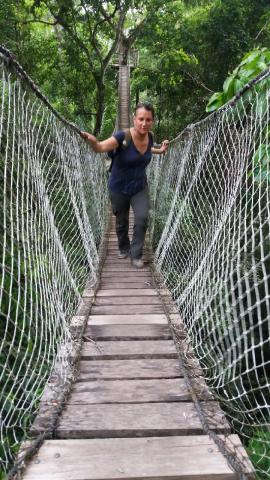 |
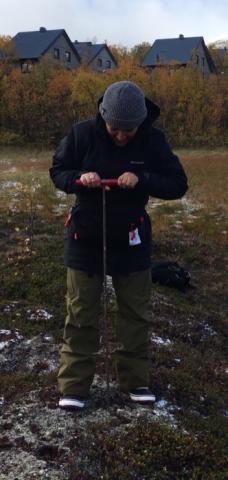 |
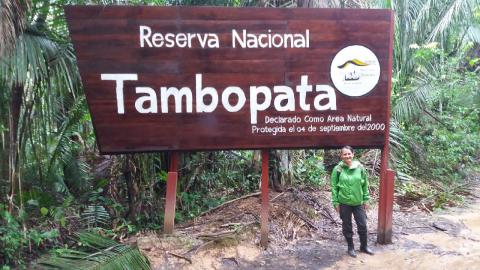 |
Guiming Zhang
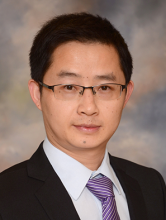
With the still on-going COVID-19 pandemic, this past year has been hectic for many. Courses were moved online, and professional conferences and research travels got cancelled. Nonetheless, it is also a rewarding year for Ming. The challenging situation has been pushing him to build resilience at all fronts. Ming enjoyed teaching, in person, a newly-developed upper-level course Environmental/GIS Modeling for the first time in Winter 2020, where students learn and practice the conceptual framework and quantitative methods for modeling spatial variability of environmental phenomena and their interactions. Ming’s courses were moved online since Spring 2020. To better cope with the change of teaching modality and to hone his online teaching skills, Ming attended several webinars related to online teaching pedagogy and best practices, notably the Pedagogies for Resilient GIScience Education series organized by UCGIS (University Consortium for Geographic Information Science).
As for research, Ming’s work has not been slowed down much by the pandemic, which is quite fortunate as his research does not involve as much field work. Ming managed to publish three journal articles, all under the theme of volunteered geographic information (VGI). They examine the spatial and temporal patterns in data contribution activities of eBird users across the world, the impacts of sample size and spatial configuration on accuracy of modeling distribution of the Red-tailed hawk using eBird data in Wisconsin, and the feasibility of integrating VGI and authoritative data to better map the black-and-white snub-nosed monkey’s habitats in Yunnan, China (supported by DU Internationalization Grant). Ming is also revising an entry on the topic of VGI to be included in the Geographic Information Science & Technology (GIS&T) Body of Knowledge compiled by UCGIS. Ming received Microsoft AI for Earth Grant to support a research project “Using deep convolutional neural networks and big data to model the distribution of birds in the Americas.”
